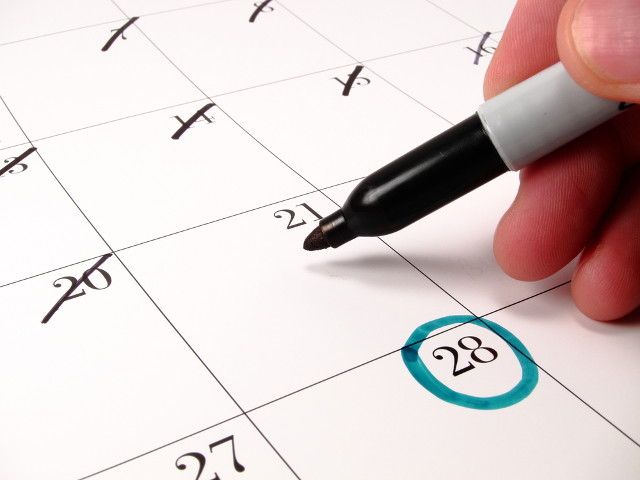We all want to develop good habits — especially around the beginning of the year, when our New Year's resolutions are still fresh in our minds. But creating new habits is hard.
Habits are usually built over weeks or months of repetition, and if you've chosen a complex habit to built, like going go the gym more often or eating better, motivation could be a big challenge. But micro-habits can be a huge help.
What's a Micro-Habit?
A micro-habit is much like it sounds: it's a small, simple action that doesn't require much motivation, but will help you build up to a larger goal habit. It's usually triggered by a specific event.
The Art of Manliness gives us two examples. Flossing just a single tooth before bed, or swiping your card at the gym when you drive past on your way home from work. The goal is not to floss all of your teeth or to get a workout in. It's just to do something very small.
What good does that do?
Flossing one tooth or swiping your card at the gym won't contribute much to dental health or overall fitness. The secret lies in the fact that once you've gotten started, even if it's just a very tiny start, you'll very often think "oh well, I started, I might as well go a little bit further." Sometimes it'll be all the way to the end. Sometimes it'll just be a bit more than the minimum. Sometimes you'll just floss one tooth. But over time, you'll add more and more to your micro-habit and it will slowly transform into your goal habit.
This happens because of an interesting psychological phenomenon called behavioral momentum.
Once you get started down a path, your mind is compelled to keep going. This can be a good or a bad thing; you can keep moving down a bad path (like overeating) just like you can stay on a good one (like flossing). But by using micro-habits to start toward a goal, you can use behavioral momentum to your advantage. Interestingly, behavioral momentum is also taken advantage of by marketers.
People want to be consistent. Once we take an action toward a goal, we tend to try to continue toward that goal, even if we decide we no longer want to reach it.
The best part about all of this is that it takes significantly less mental effort to commit to the micro-habit than it does for the larger goal habit.
B.J Fogg talks about flossing as an example of behavior change with tiny habits in this TED video:
Unlearning Bad Habits with Good Micro-Habits
Micro-habits are great for conquering bad habits that you've established. The desire to engage in your bad habit is used as the trigger event. Let's look at an example: say you want to break your unhealthy snacking habit. If you often go from your desk to a cupboard or even a table across the room to grab a piece of chocolate, you can use that as a trigger.
Whenever you get up to get some chocolate, you'll first eat a carrot stick. Just one. After that, you can grab a chocolate and eat it without remorse. Eventually — if all goes as planned — you'll be snacking on carrots instead of chocolate, because you've built from up the micro-habit to the goal habit.
You can use this with digital bad habits, too. If you check Facebook too often, and you'd rather do something that you find more rewarding, but can't break the habit, you can use your desire to check Facebook as a micro-habit trigger. Let's say you want to spend more time reading inspirational things in your RSS feed.
Every time you feel like checking Facebook, read just one RSS entry first. Then you can check Facebook. Hopefully, after a while you'll be reading items from your RSS feed and getting inspired instead of checking Facebook, because once you've read one item, you'll be thinking, "I switched to this tab and started reading, I might as well keep going." (Of course, compulsive checking of your RSS feed can be detrimental to productivity, too, but at least there's the possibility of learning some new things.)
Of course, compulsive checking of your RSS feed can be detrimental to productivity, too, but at least there's the possibility of learning some new things.
12 Micro-Habits for a Better Digital Life
The micro-habits that you choose for your life have to be things that you want to work on, or else you might struggle to even commit to something very small.
To get you started, here are twelve triggers and micro-habits that you could use to increase productive habits and counter some of the bad habits we get into with our digital obsessions:
- Whenever feel like texting, work one Pomodoro cycle before you text.
- Whenever you want to check your email, stand up to do a couple stretches.
- Whenever you find yourself multitasking, close or minimize one tab or window.
- Whenever you schedule a meeting, schedule a block of free time at the same time.
- When you go to bed, before you look at your phone or computer, meditate for one minute.
- When you feel like taking a break to browse the web or check Facebook, open your task list first.
- When you want to have an unhealthy snack, stand up first (eventually, aim to go for a short walk instead).
- When you think "one more episode," walk to your bedroom door (with the goal being to get to bed at a more reasonable time).
- When you're eating a meal, before looking at your phone, read one page from a book.
- After you brush your teeth, write one sentence in your journal.
- Before making an online purchase, open your savings plan.
- When you want another cup of coffee, have a glass of water.
As you can see, you can use micro-habits for all sorts of thing! Use them to get rid of bad digital habits, set up good habits, read more, get more exercise, improve your posture, eat better — the possibilities are limitless.
Have you used micro-habits in the past? Do you think they'll help you establish some good habits this year? Which micro-habits do you plan on using? Share your thoughts below!
Image Credits: Smile freedom and happiness woman (edited), Counting down the days with a calendar, portrait of a young woman with chocolate and vegetables via Shutterstock.



